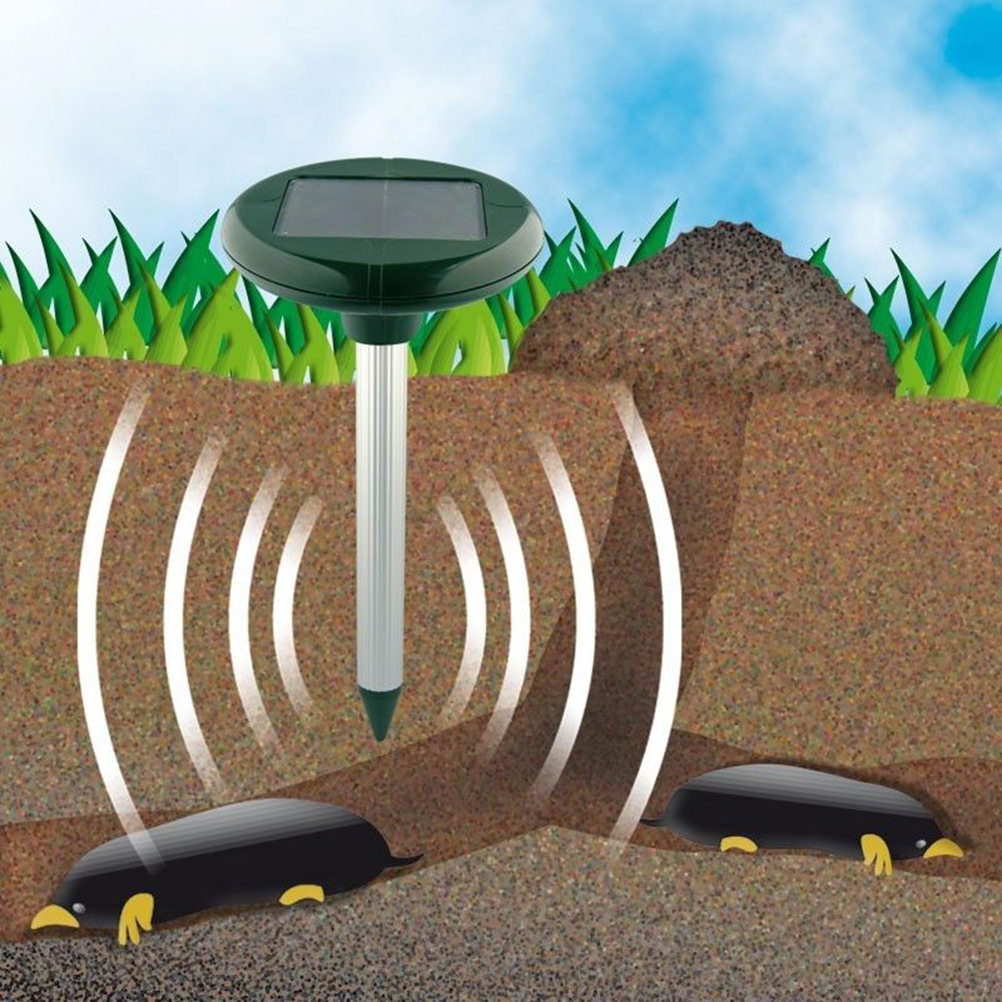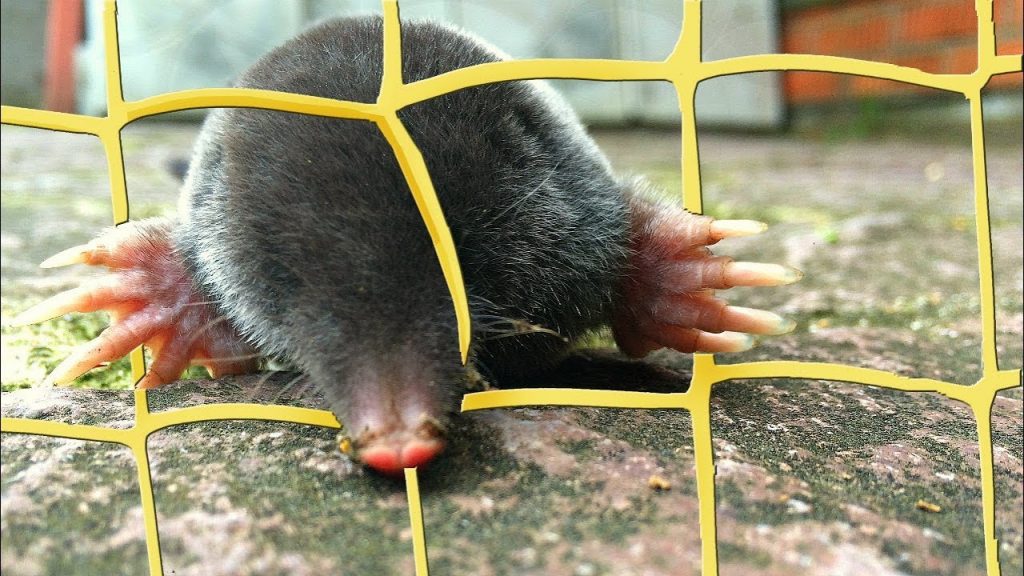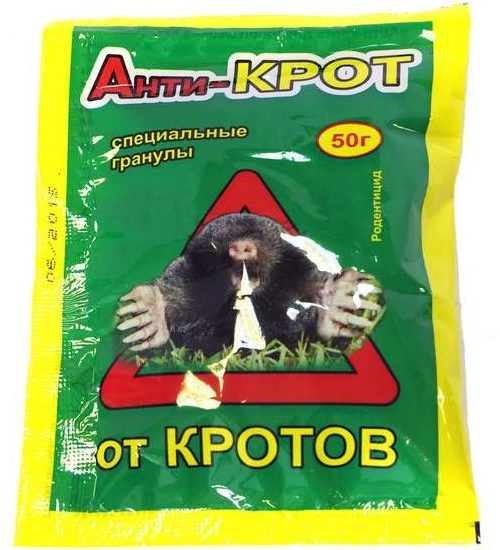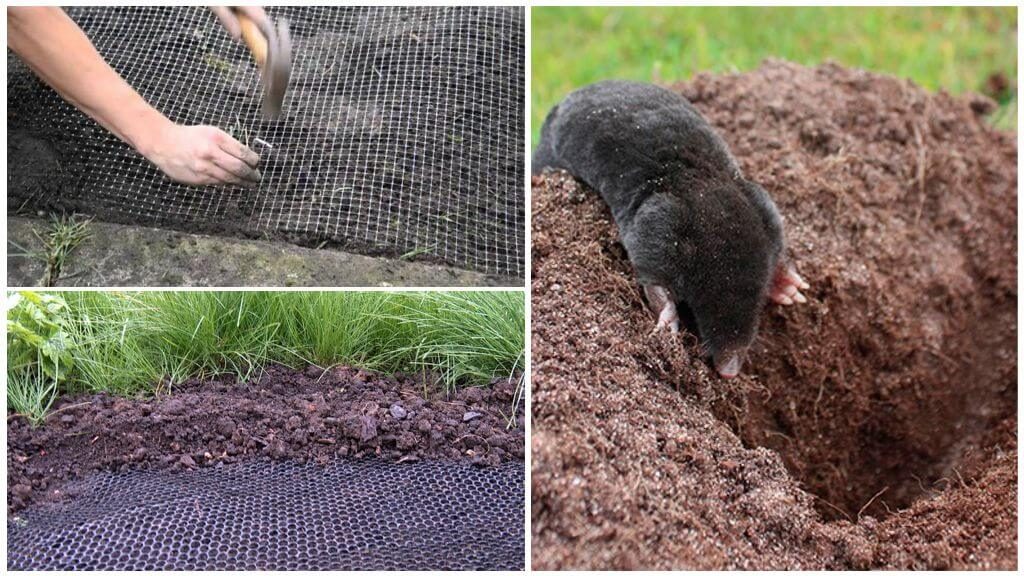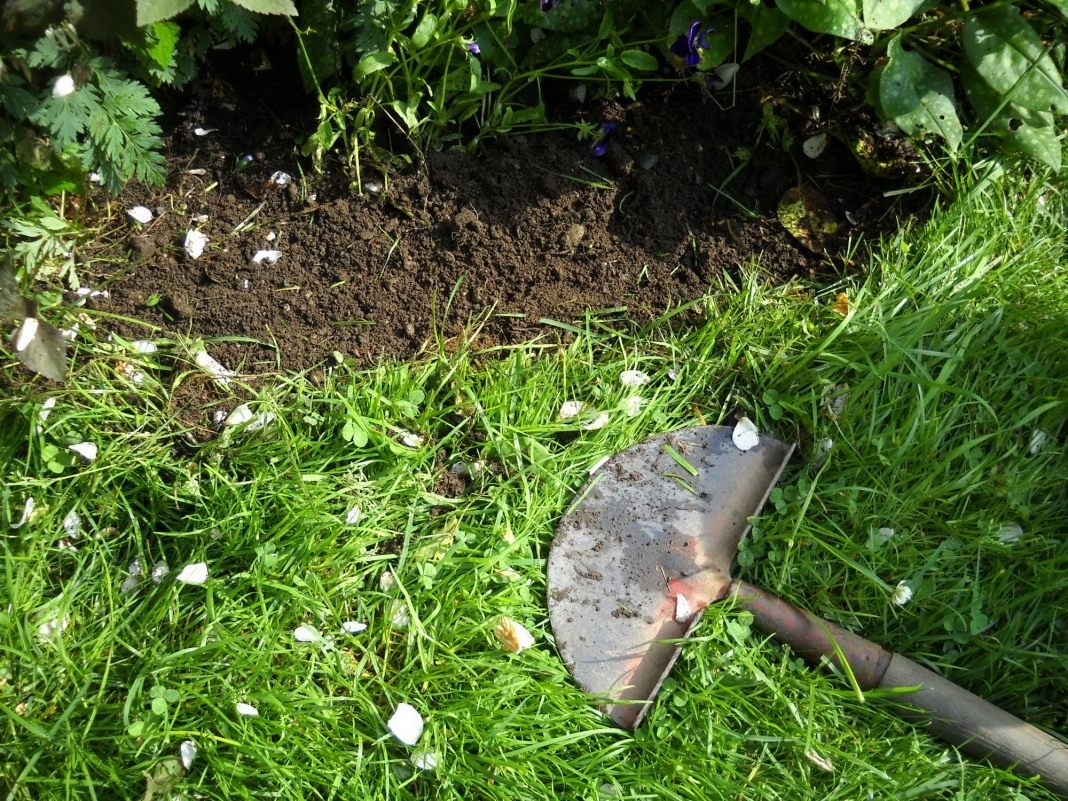A mole at a summer cottage is not always a natural disaster. However, the harm from it can be significant. In a few days, the mole family turns the plot into a hummocky wasteland. Laying passages, animals dig in the roots of trees and garden plants, which then dry out. To get rid of these pests, it is not at all necessary to resort to expensive technological devices. The article tells how to get rid of moles on the site forever with folk remedies.
How to drive out moles
The harm from moles is not at all as straightforward as it might seem. These animals are an important link in the ecosystem: they loosen the soil and destroy many plant pests. Even if it happened that a man and a mole claim one piece of land, the problem can be solved peacefully.
- Plants. The mole has a developed sense of smell and cannot stand the smell of some plants.
- Odorous substances. Foul-smelling mines are laid in the mole passages to drive out the pest.
- Ratchets are various devices that cause noise and vibration in the soil. Moles get scared and go to quieter places.
- Fencing. The area around the perimeter is surrounded by a metal mesh dug into the ground.
Scarers
The essence of the method is to create a source of constant noise or vibration on the site and drive the pest away. It usually takes 1 week for the animals to understand that the source of concern will not disappear and hatch. It is important to understand that it is better to combine methods. Multiple scarers from different systems greatly increase the chances of success.
- Glass bottles. They are dug into the ground at an angle of 45 ° with the neck up. The sound of the wind and the vibration that is transmitted from the bottles to the ground makes the moles feel threatened. Bulky, thick-walled, long-necked bottles, such as champagne, work well.
- Reed. Reed stalks 1.5-2 m long are cleaned from the inside of the "cotton wool" to make tubes, and inserted into the mole holes so that 50-70 cm protrudes outside. Under the influence of the wind, the reed emits a characteristic sound and vibrates. It is better to take reeds of different diameters and lengths so that the tone of the sound is different.
- Ratchet from a plastic bottle. A stake is driven into the ground on the site (preferably metal, since it conducts sound and vibration better). The stake should enter the soil 0.5 m and rise 1.5 m in order to catch the wind well. 4 petals are cut in the cylindrical part of the plastic bottle. If you bend them, you get wind blades. The bottle is put neck down on the rod, and everything is ready: the wind spins the bottle, shocks and vibration are transmitted through the stake into the soil.
- Simplified system ratchet. A tin can is put on the stake driven into the ground. The wind hits the can on the stake, creating sound and vibration. In strong winds, the rumble will be stronger.
Traps
This refers to ways to catch the mole alive and remove the intruder.It should be noted that a mole released nearby will surely return "home". So you have to either kill the mole, or take measures so that the mole does not return. How to do it:
- By eye. The method requires practice and dexterity. A mole during its movement underground can be tracked by the moving swelling of the soil. You need to stick a shovel into the ground behind the mole and with a sharp movement throw it along with the ground to the surface. The mole is very strong for its size, and its burrowing legs are armed with strong claws. It is worth picking up a mole only with thick gloves.
- Well trap. A molehill is dug up and a wide glass jar or saucepan is placed so that the edges of the trap are flush with the tunnel. The mole falls into the jar and cannot climb the smooth walls. After setting the trap, the mole must be covered and covered with earth.
- Bottle trap. The plastic bottle is trimmed at both sides to form a tube. Next, the cut off part with the neck of the bottle is taken and cuts are made in it in the form of rays so that the neck opens like a flower. If you insert this part into a plastic pipe with the throat inward, the mole can easily get inside, but it will not be able to get out through the petals back. From the second side, the same part is inserted into the pipe, and the trap is ready. It is necessary to install it in a fresh wormhole and sprinkle it with earth.
- Mole catcher. The principle of operation is like a mousetrap. Manufactured from 5 mm steel wire. This design has drawbacks - creation requires certain skills and tools. And the trap only works in one direction, if a mole stumbles upon a device from the back, the trap will be meaningless.
Natural repellents
Another way to get rid of moles in the country with folk remedies. Many plants have a pungent smell that repels moles. These are onions and garlic, beans, beans and peas, as well as decorative flowers: narcissus, imperial hazel grouse, marigold, Siberian praleska.
Sometimes it is recommended to plant a marque and castor oil plant, but the use of poisonous plants carries risks, especially for young children.
It is often recommended to put various foul-smelling mixtures in burrows to get rid of moles - fish heads, garlic, rotten vegetables, tar, kerosene. It makes sense to test these means, but animals can fill up the entrances to the tunnels with a bad smell and build detours. Or, next to the "stinking mine", a dozen molehills may grow overnight - this animal arranges enhanced ventilation of the passages.
Poisons
The use of poisons requires a balanced approach. Small children and pets can fall prey to the poison intended for moles. Also, some substances can be toxic to cultivated plants. This is especially true for the funds sprayed on the ground over the area of the site.
- Common poisons. Earthworms are sprinkled with rat poison and laid in mole holes. This method is not recommended if there are poultry in the area. It is believed that moles, with their keen sense of smell, recognize poison and refuse the bait.
- Smoke bombs are a special agent that is put into burrows and emits poisonous smoke. Both sulfuric and insecticidal checkers destroy the useful microfauna of the soil layer, and in general all living things. May be toxic to plant roots.
Protective barrier
This is a time consuming but reliable way to save the site. The idea is simple - you need to build an impenetrable perimeter for animals. The material used is a metal or plastic mesh, fine enough so that the animal does not crawl through the cells (maximum 25 × 25 mm). Slate or metal sheets are not suitable for a barrier, they impede water exchange, block the path of earthworms.
Operating procedure:
- A trench is dug under a net 1 m deep and about 30 cm wide. This is the most laborious part of the work.
- The mesh is installed vertically into the trench. At the junctions of the sections, an overlap of 10-15 cm must be made. The upper edge must be raised above the ground by at least 25 cm.
- The trench is carefully poured, the earth must be tamped.
Another method is used to protect lawns. The mesh is laid horizontally 5 cm under the soil. The mole cannot rise to the surface, and accordingly, arrange molehills. An excellent method that allows you to maintain a well-groomed grass cover and does not interfere with the animal.
Gardener tips
There are many tips on the net, but not all of them are effective, and some are even dangerous:
- Flooding passages with water from a garden hose. With an extensive network of tunnels, flooding will turn the site into a swamp.
- Introduce the exhaust from the car into turns. The method is dangerous for the entire microfauna of the site - microorganisms necessary for cultivated plants. May be harmful to pets and small children.
- Poison from boiled wheat and poison. Moles are not interested in plant foods, so the method is ineffective.
- Domestic cats are excellent mole hunters. Perhaps such a domestic hunter will not be able to remove the entire colony of moles, but it will help significantly.
- Perhaps the best advice is to think ahead. Arrange a fence, set traps. Determine the place where to carry the caught moles, increase their chances of survival.
As you can see, there are various folk methods that allow you to remove moles from the site: you can plant plants that are unpleasant for the pest, install mechanical repellents and traps. In special cases, poisonous substances are used, but you need to be careful and weigh everything well. A sure-fire way to prevent intrusion is with a mesh barrier.
It is not necessary to kill moles. This animal is a necessary part of natural balance. It eats insect pests in plural quantities and scares away rodents. But, if the gardener does not intend to put up with this, then the folk methods of how to get moles out of the site once and for all, described above, will come in handy for him.

